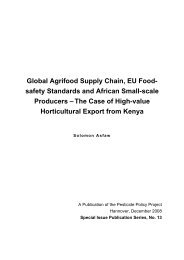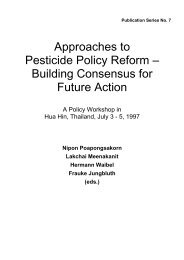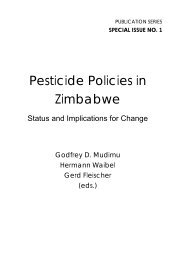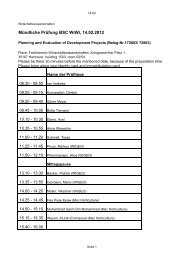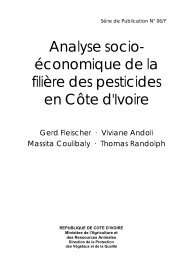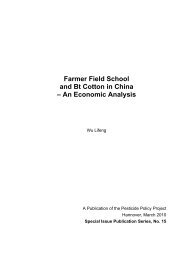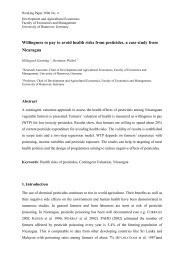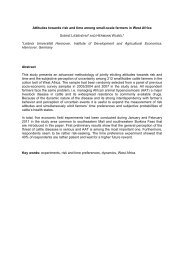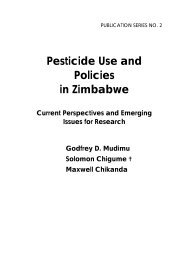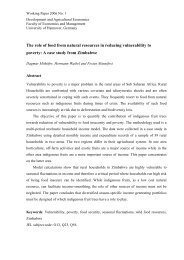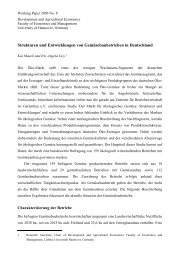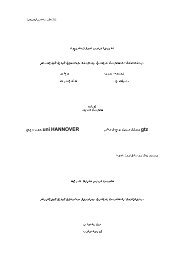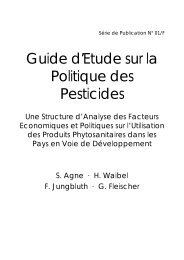PPP Special 08 - Institut für Entwicklungs- und Agrarökonomik
PPP Special 08 - Institut für Entwicklungs- und Agrarökonomik
PPP Special 08 - Institut für Entwicklungs- und Agrarökonomik
Create successful ePaper yourself
Turn your PDF publications into a flip-book with our unique Google optimized e-Paper software.
29<br />
averages, daily maximum and minimum retail prices for Bt and non-Bt<br />
varieties in Dharwad district during the 2002-harvesting season.<br />
Table 4.10:<br />
Comparison of market prices non-Bt vs. Bt cotton<br />
[US$/qtl] 9 in Dharwad, 2002<br />
Daily Minimum Daily Maximum Mean<br />
[US$]<br />
[US$]<br />
[US$]<br />
Total Average Non-Bt 39.46 66.22 55.00<br />
Total Average Bt 39.09 47.14 43.12<br />
Source: Retailer, APMC Dharwad, 2003<br />
As shown in Table 4.10, on average, Bt cotton fetched lower prices. The<br />
starting price at the beginning of trading was about the same as the<br />
starting price for non-Bt cotton, however, over the harvesting period the<br />
difference became clear for the daily maximum price. On average, the<br />
retail market price for Bt cotton was 20 per cent lower than for non-Bt<br />
cotton. When asking farmers for the reasons of this difference they<br />
pointed out that Bt cotton is a medium staple variety. Staple length is a<br />
quality characteristic and therefore influences market prices.<br />
Summarizing the findings presented in this section it becomes clear that<br />
during the 2002/2003 harvesting period farmers growing Bt cotton had<br />
overall higher yields (about 10 per cent) than those growing<br />
conventional cotton varieties. This was especially true when<br />
differentiating the sample by irrigation. The difference was bigger<br />
(compare Annex A-4 and A-5) for those farmers that grow Bt and non-Bt<br />
cotton side-by-side, indicating that more care was given to the new<br />
variety. Overall, it is not yet clear what the reason for this yield<br />
difference was because bollworm populations were low in 2002 and<br />
farmers sprayed only moderate amounts of pesticides. On the other<br />
hand, the relative yield advantage of Bt was offset by their lower prices<br />
in the Dharwad retail market as compared to conventional varieties.<br />
Therefore, as a final step, the economics of both types of cotton<br />
production was investigated.<br />
9 1 US$ = 46.45 Indian Rupees



